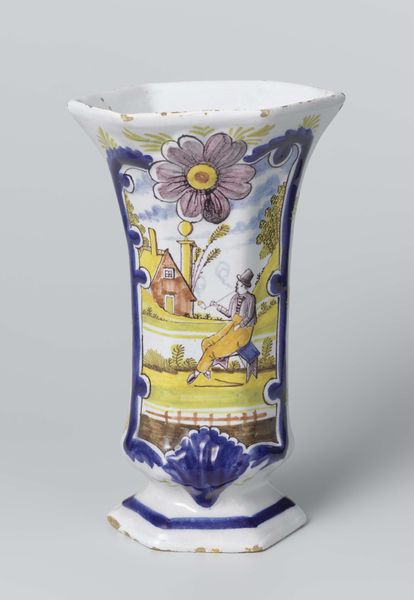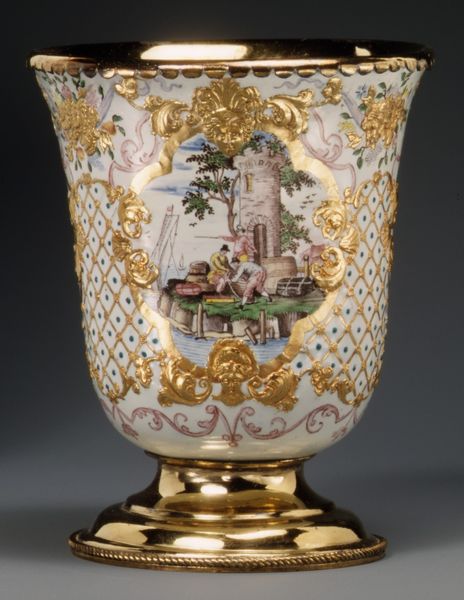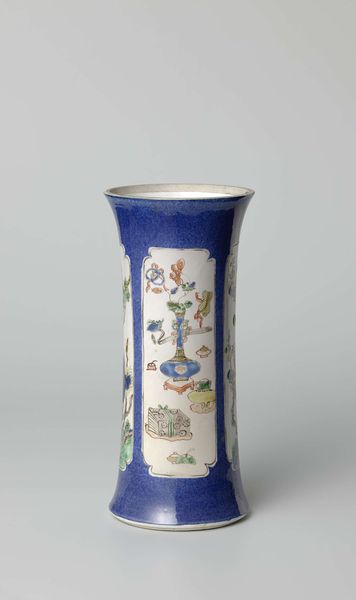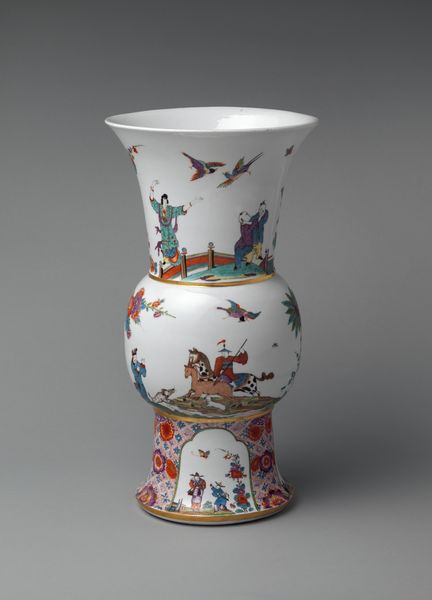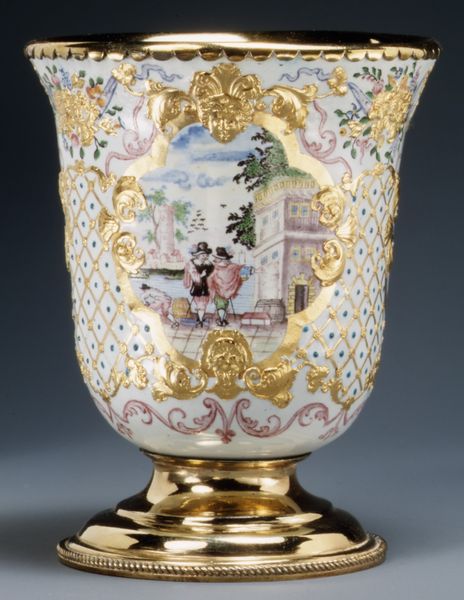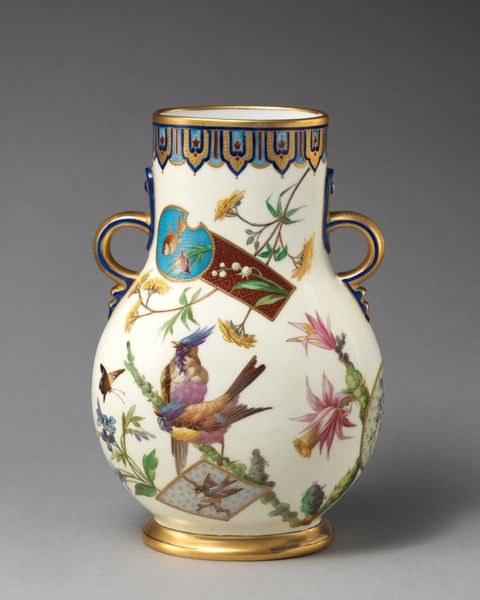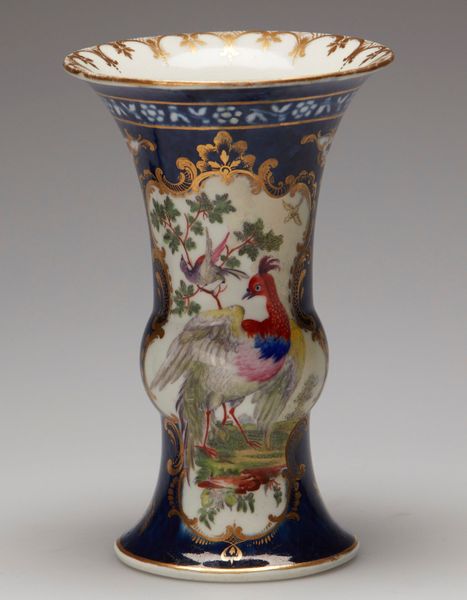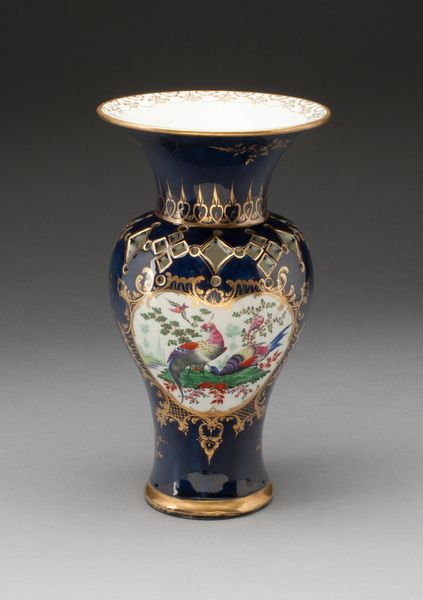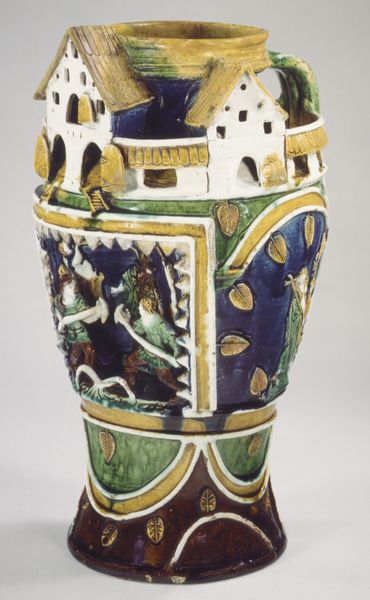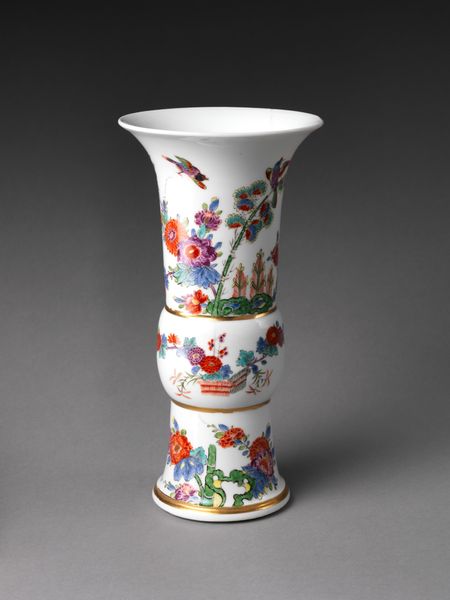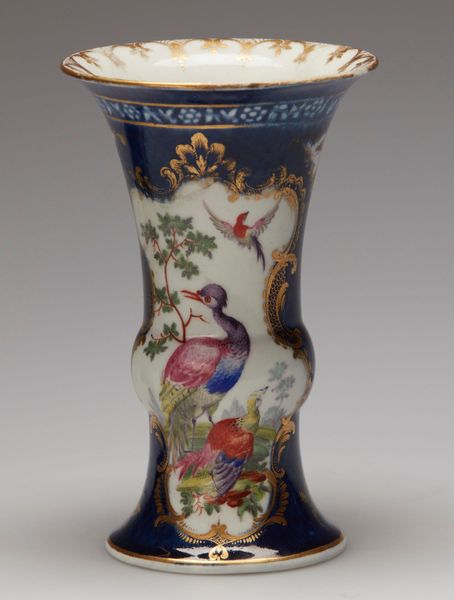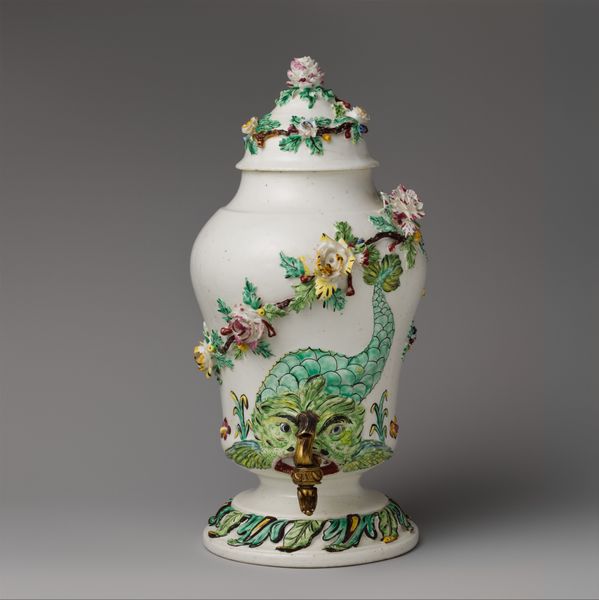
Dimensions: height 21.7 cm, width 12.0 cm, depth 9.6 cm
Copyright: Rijks Museum: Open Domain
Editor: This vase, created sometime between 1780 and 1820, is made of earthenware. The idyllic scene painted on its surface really captures my eye, with people seemingly enjoying a waterside moment. What draws your attention to this piece? Curator: Well, let's consider the visual vocabulary. Notice the Rococo influence, those ornate, asymmetrical details rendered in a yellowish palette? The cultural memory embedded here is one of idealized pastoral life, a kind of retreat from the complexities of a changing world. It is interesting how those shapes frame an image of leisure. Does that leisure have an affect? Editor: It feels very constructed, like a scene from a play. Almost as if the vase is showing how wealthy people at the time desired to relax. Curator: Precisely! Consider how earthenware, a relatively common material, is elevated through decoration to mimic finer porcelain. What do you read in the figures and landscape? Does this rural scene hold some type of familiarity or unfamiliarity? Editor: They look very serene, though somewhat detached. I almost feel I'm peering into someone else's memory or constructed image of tranquility rather than real tranquility itself. I notice also what may be religious symbolism, too, around the main figure's head, drawing parallels perhaps to biblical themes within everyday life. Curator: Good eye. It encourages us to question not just what we see, but how deeply ingrained these cultural narratives are in our perception of beauty and leisure. This wasn’t only for looking at pretty images, it’s an echo of the period's value system. Editor: So, the vase is like a mirror, reflecting both the artistry of its time and its audience’s desires? Curator: Exactly. By studying the symbolic language embedded in such objects, we gain insight into a whole culture's hopes, dreams, and self-image. Editor: That's fascinating! It is like the vase is performing the function of art, even today. It has been a pleasure. Curator: Indeed! It really allows us to engage, even if momentarily, with the object, art, culture and history.
Comments
No comments
Be the first to comment and join the conversation on the ultimate creative platform.

